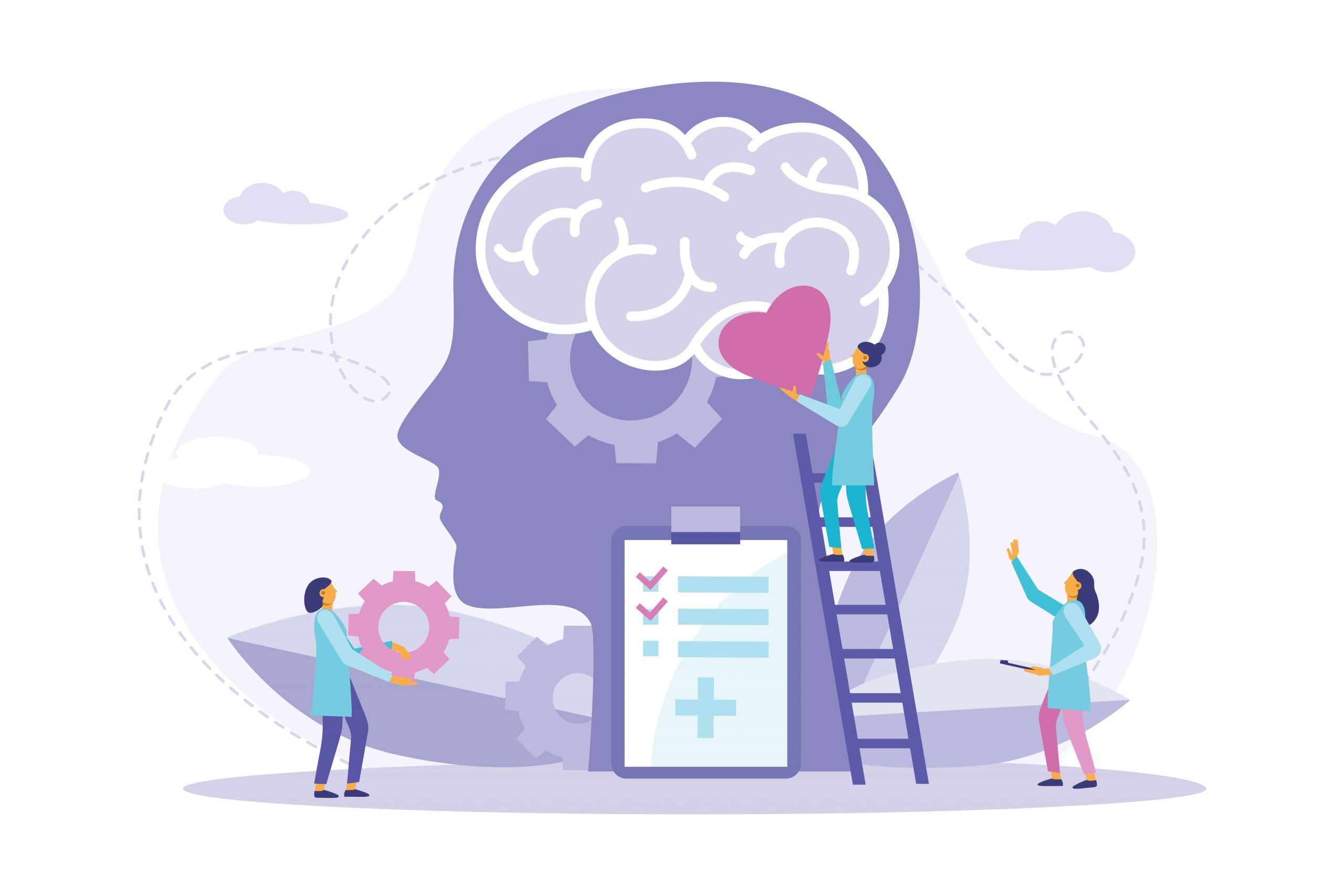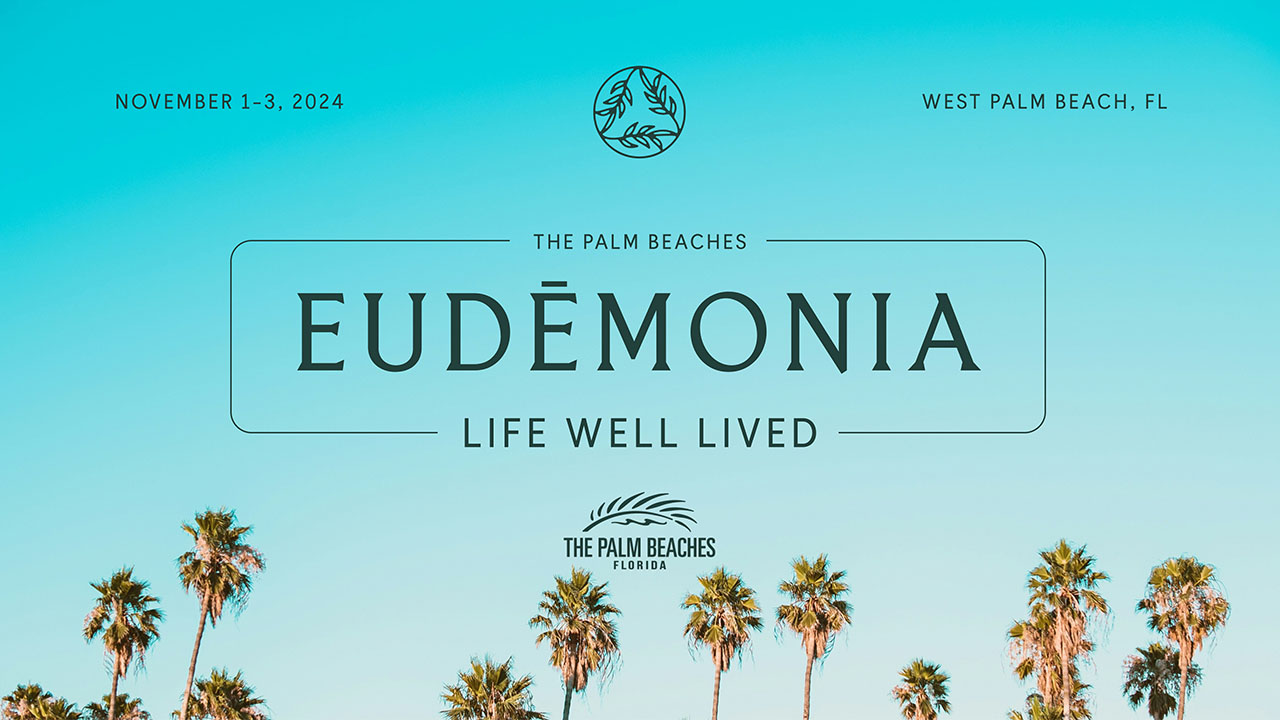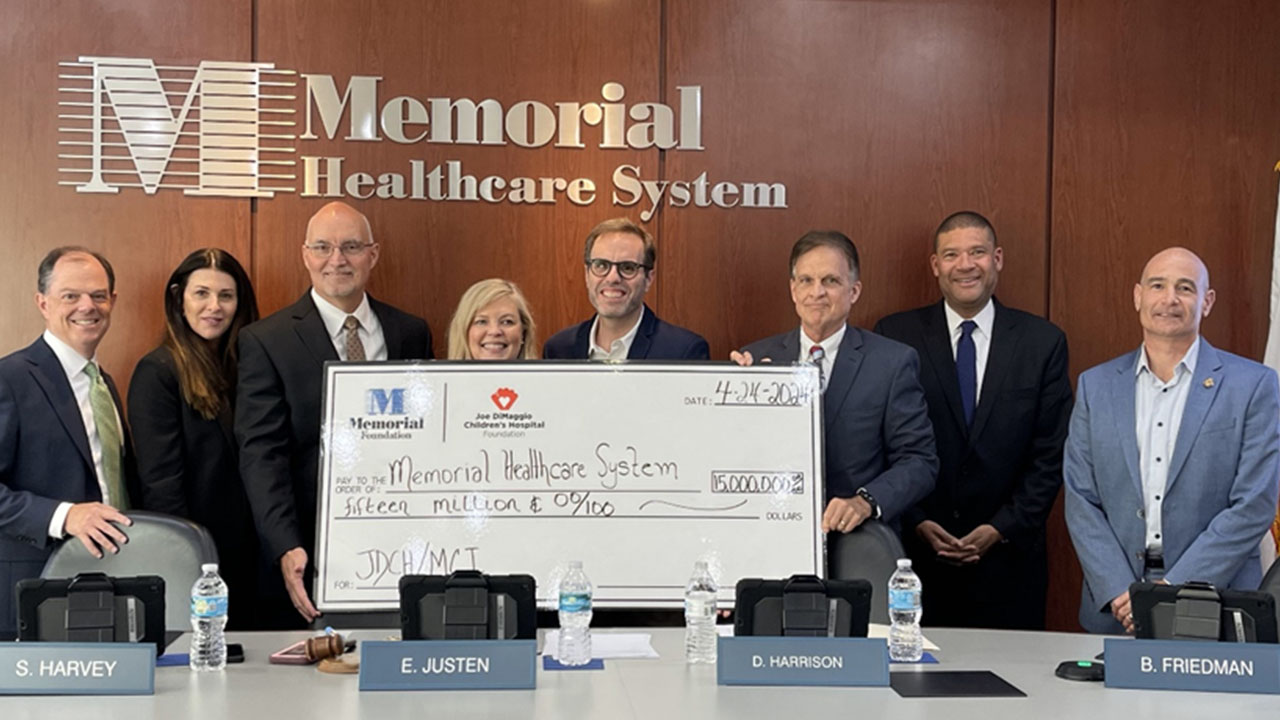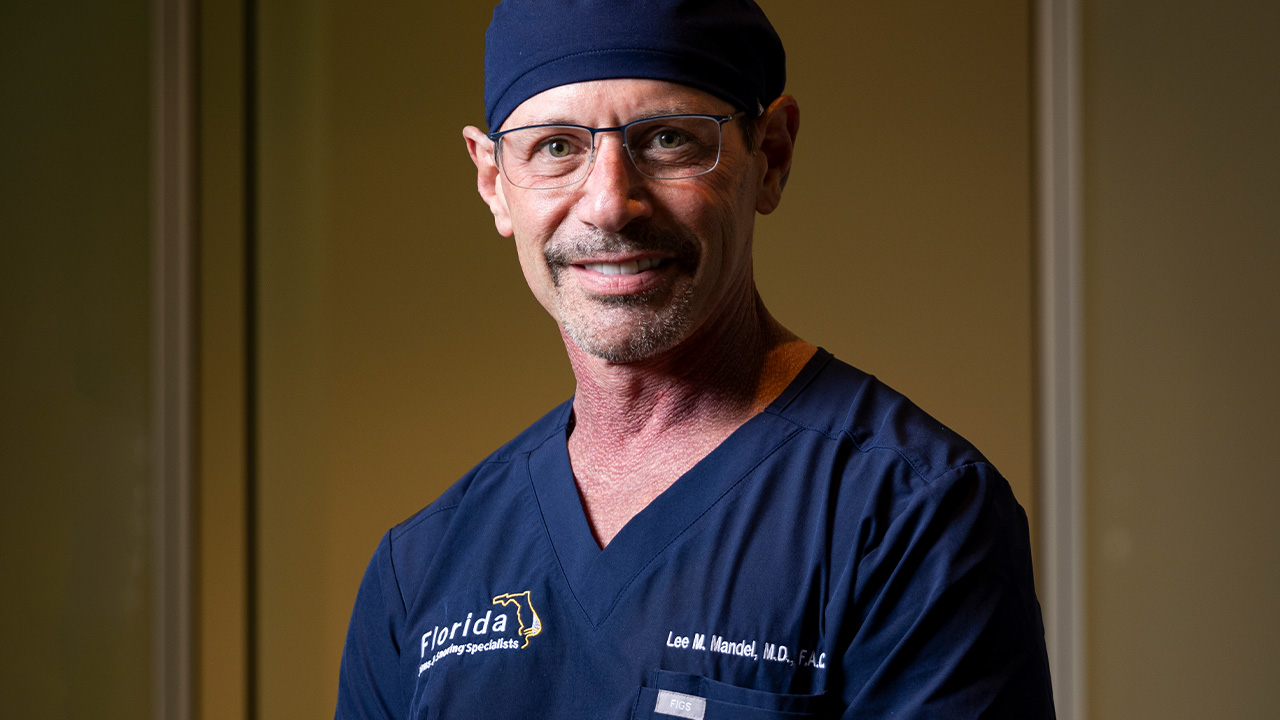The latest installment of SFBW‘s Virtual Connect series delved into the added stress the ongoing COVID-19 pandemic has caused employees, and what businesses and health care providers can do to ensure that workers stay healthy—both mentally and physically.
From business shutdowns to increased childcare demands along with the challenges of remote work, employees have faced obstacles never seen before, but are employers able to assist their workers to ease the extra burdens the pandemic produced? The “Virtual Connect: Employee Mental Health in a Pandemic” forum, sponsored by Florida Blue, featured a panel of health care experts moderated by Penny Shaffer, the Florida Blue market president for South Florida. The panelists: Samantha Chafin, the senior director for behavioral health strategy and operations at Florida Blue, and Michelle Pargman, an employee assistance program and wellness clinician with New Directions Behavioral Health.
COUNTERING STIGMA
We’re thrilled to have two very professional women with us today to talk about this important subject. We want to talk a little bit about the impact that we’ve seen on behavioral health on employees and productivity during the pandemic. But I want to take a step back first. Biases still remain in mental health, and I just want to ask both of you if you’ve seen a shift with the perception and use since the start of the pandemic.
Chafin: As Americans, we tend to be influenced by role models, the political figures, the Hollywood figures and athletes. So, it’s been interesting to see how in this time of a pandemic, those individuals who oftentimes influence Americans have helped with the issue of the mental health stigma by coming out and speaking loudly about their personal experiences. It has opened the door for conversations that, frankly, haven’t happened in the past. So, it’s encouraging to see action like that happening. But now it’s time to take it more to a local level. And particularly as we talk today, I want to talk more about how you as an employer can help us remove that stigma.
By embracing this, like you do many other health conditions, you wouldn’t think twice about supporting your employees with diabetes, or other medical conditions, while mental health is the same thing. And so, you need to be thinking that there is no health without mental health. And when you start treating it like that, you will help us bring the stigma down from a [use] perspective. Absolutely, we’ve seen a significant increase in [use] and that’s again to do with the self-identified individuals who now say yes, I have a mental health condition. Prepandemic, it was about 20%. But in August 2020, the CDC reported that they’re seeing figures over 40% of Americans say yes, I have a mental health condition. So now we need to help them get the care they need. And while we’ve seen the increase in care, it still may not be the right care in a more preventative way. So we’re looking for an opportunity for us to continue the dialogue on how we can get the right care at the right time to serve those needs.
Pargman: According to NAMI, the National Alliance on Mental Illness, more than half of all adults say that they’ve been more open with others about their mental health since the pandemic began. So, I agree with Samantha, there is a shift, there is an openness. I often talk about same storm, different boat, meaning, in the beginning of the pandemic, we’re all in the same boat. And I think more accurately, I have since heard people describe it, as we’re all in the same storm, just in different boats. And I think that resonates with me because we all are in different situations.
And I think as a result, I have seen a shift in seeing counseling and mental health support for more daily struggles, regardless if there’s a family history of mental illness or patterns of mental health conditions. That kind of support has been a normalizing factor that we don’t have to wait for there to be a mental health crisis for us to seek it. And I will say I’ve seen people reach out, often for the first time, which gives me hope, because before the pandemic, the average time between the onset of mental health symptoms and diagnosis and treatment of a mental health condition was 11 years, which is startling. If we have pain in our bodies, we often don’t wait around long before we seek help. So, my curiosity and my hopefulness is that one of the long-term positive impacts of COVID is a reduction in that time, from onset to treatment; that’s the hope.
COSTS OF ISOLATION
Sometimes we see an event or an activity that triggers our need for care and this has been really an elongated situation. Can you talk a little bit about those characteristics and some of the differences that we’ve seen in the need for mental health due to long-term isolation and some of these other characteristics that we’ve seen?
Pargman: First of all, I have seen an increase in children and teens coming to the EAP, particularly last spring. When you talk about shifts, this whole time, we’ve seen evidence, we’ve seen flows, we’ve seen different populations attain mental health support at different times. I’ve seen an increase in families using the EAP; I’ve seen an increase in men using the EAP. And I’ve seen an increase in grief and loss as a presenting issue, which is no surprise during this time. Mental Health America came out with their report, which they do every year based on screening results from over 1½ million people from January to September 2020. It reported that the number of people looking for help with anxiety and depression skyrocketed. It showed a 93% increase over 2019 in anxiety screens and a 62% increase over 2019 in depression screens.
More people report frequent thoughts of suicide and self-harm that have ever been recorded in the Mental Health America screening program since they launched it in 2014. There is the challenge of wait times, but also the upside is that it has presented an opportunity where there has been more recruiting of mental health providers than I have ever seen. And, of course, telemental health being on the rise as an acceptable form now. So that’s, to me, another benefit of the long-term impact of COVID.
Chafin: I love that example of we’re all on the same storm, but we’re in a different boat. And I think what’s important for us to think about is who’s in the boat with us. Let’s talk about the rest of the family. What about those old-aging adults? The isolation that occurred with the aging parents also accelerated what may have already been identified, like early emerging issues like dementia. And so, there is now an extra layer of stress and almost a need to address your core employee with not just their mental health care, but resources and opportunities to receive support for that care of dependents, whether it’s an older adult, their parent or their child.
What are the obstacles to access to care and services? We’ve seen, obviously, that there have been some pretty big obstacles during COVID for all kinds of services, so talk a little bit more about how we’re overcoming those obstacles.
Chafin: First, it was a question of an entire marketplace across the nation facing a limited number of resources. Students we’re not getting into behavioral health services. They did not have a desire to be a psychiatrist or a psychologist or a licensed clinical social worker and we’re hoping we’ll see a change in that trend. We have partnerships with universities who are encouraging students to go into this specialty. And that’s certainly will help, but that’s a long-term solution to a short-term need.
Of course, telehealth was critical, making sure that we supported that from a benefits perspective, but also from a solution perspective, because not every provider, particularly behavioral health providers who tend to be small business owners, could invest in the technology to support virtual visits. Let’s acknowledge that the health care system is a very fragmented system. But, yet, the one place people start at any time in their care journey is usually with their primary care provider. So, we are working closely with our primary care providers to incorporate what is called measurement-based care of behavioral health assessment as part of your well or new patient appointment.
And with that information, they can create an integrated treatment plan, where they will be able to quarterback both the medical and the behavioral health needs of their patients. And then, we, as partners, will enable the member and that provider to connect both the medical and the behavioral health services through our behavioral health providers. We’re pretty excited about how we’re going to overcome barriers to access in many ways.
CHALLENGES TO CARE
What advice would you give an employee who may need help but is concerned about job security and not wanting the mental health stigma, even though so many others are experiencing the same issues?
Pargman: If you’re going through something, remember there is no health without mental health. And that being the case, if you’re dealing with an issue, whether it’s your mental health or physical health, you’re addressing a medical situation. And at the minimum, you don’t want to go AWOL because I think it’s very tempting sometimes when we’re dealing with mental illness or mental health symptoms, it’s really easy to want to withdraw, escape, avoid conversation with your manager because you don’t have the words. But I will say at a minimum, what would you say if you had a broken leg or you had an accident? You would say, I’m dealing with a medical issue, I won’t be able to come in today. Literally, that is the truth, whether you’re dealing with a physical or mental issue. So that’s one approach and that’s my initial reaction to that question, which I think is such an excellent one.
Let’s talk a little bit about what sort of impact major events and things like the pandemic, but also the Surfside building collapse, mass shootings, or other things have had. How does that impact the workforce?
Chafin: With COVID-19, nobody expected it to last this long. But let’s not consider getting back to normal the end of our journey. This is probably going to be years into the future that we’re still dealing with the long-term impacts on our possibly physical, but definitely emotional, health because of this pandemic. Well, the same thing happens in these crisis events. When everybody is rallying around each other, they’re offering a crisis line; they’re offering support, everybody’s very sympathetic to each other. But the lingering effects for those who may feel the stress and trauma of that event for months, and possibly years later, you need to make sure that they’re getting the care they need in the long term, too. So, let’s make sure they’re always reminded about the services and programs that are available. We need to put tools in the hands of our community, our employees, that allow them to have an app or a program that really is nudging them, informing them and giving them options to be able to assess their mental well-being and then take the necessary steps.
Pargman: I think major events present this opportunity for more connections. I think the reminder that physically distant was a more accurate directive than socially distant. If we have forums to grieve and discuss collectively, if we don’t get the opportunity to share our pain, we seem to suffer in isolation. And to me, that’s the beauty of things like an employee assistance program to have somebody to respond to a group or work team that’s been impacted by a large-scale event, like the Surfside building collapse or mass shootings or what have you. Because there’s a lot of research into those kinds of debriefings for decades that talk about restoring productivity faster. If you’re giving people an opportunity to share their reactions about it, we all have a different way of expressing ourselves. So, there’s no one-size-fits-all.
Those become those moments to reinforce the importance of self-care to normalize and validate other losses and provide tools and reminders to assist others in navigating through their reactions to a major event.
Where does addiction land in terms of pre- versus post-COVID?
Chafin: So, in Florida, unfortunately, we have seen, during the pandemic, a 40 to 60% increase in overdose deaths. We already knew we had an opioid crisis before the pandemic; this has only exacerbated that issue. The stress and the isolation, whether it’s the financial strain or stress of the pandemic, or dealing with the grief of losing loved ones—and then not being certain about your employment—there’s so much that’s happening that unfortunately, people have turned to or returned to using opioids and alcohol and other substances to address those stress and anxiety issues. I think one of the struggles we have in the employment work environment is, even if you have that opportunity, you feel like you’re not empowered or have the right tools or knowledge on how to help an employee navigate that.
And, so, we need to be talking, as employers who support you with a health plan, about how we can empower you. But also make sure your supervisors and your managers do not call out that there might be an issue, but help bring to the employee the services that are available.
SELF-ASSESSMENT
We know after Parkland and some of the other major events that it sometimes takes months or years for people to recognize that they really need help. And so we’ve helped put together the South Florida Behavioral Health Collaborative, just bringing together, now I think we’re up to 75 agencies coming together, to say, how do we provide health long-term to the community. It’s Florida Blue, but it’s also community-based agencies that have trauma-informed therapists that can help and are trying to create a pathway, that no matter what resources you may have, whether it’s through your employer or individually, or the community, there is a pathway to get you help, regardless of your insurance status, that you can get access to help, as we never know when we’re going to need it most. I have one last prepared question, which is, are there certain programs or services that you’re starting to see that are really resonating with you?
Chafin: In 2021, we introduced a digital well-being tool called Equilibrium to our fully insured membership. And it’s very much resonating with our membership because it enables an individual to begin their journey by completing an assessment and creating a profile about their resiliency. You know, a lot of people will say, well, I’m an optimistic person, I think I’m happy all the time. Well, sometimes there is a reverse side to that that doesn’t help you address life events, as well as maybe you could. So, you know, it’s really for everyone to use.
This application, which is available both on desktop and as a phone app, enables the individual through their assessment results to be served skills and resources and certain tools that will help them improve their resiliency, which makes them fortified to deal with those daily events, and maybe improve where they’ve had some episodes of depression, anxiety or stress. People really appreciate the opportunity to have that, almost what I call the extra appendage, because their phone is really part of their hand now. You know, they have one hand to use, and then they have the phone in the other hand. When you have a tool like that on your phone, it really just becomes part of your daily activities. And it becomes normal for you to always be thinking about, how am I feeling right now? Should I help address some of my negative spin thinking? Do I need a moment to meditate? Do I need to step back and think, OK, why did I react that way to a co-worker or my child or my elderly parent when I thought I was OK, and maybe I’m not? So those are the kind of tools that seem to be getting a lot of attention and a lot of engagement from our membership.
Pargman: I was going to say is the importance of crossreferrals is vital between your vendors and I love all of the amazing resources that Florida Blue provides. I love to learn more about it, so then I can educate people that I come across to say, hey, did you know you have access to this Equilibrium app? In fact, I’m a guest on Equilibrium because I want to know what exactly it offers. Another thing that I think has resonated is we have been doing these quarterly discussions with employees. And it’s been very engaging on topics like connection.
So, on the one hand, they get the first half of understanding more about the EAP because it’s much more than just mental well-being, but also they have legal, financial and work-life resources and referrals. But also, then we talked about a topic like connection because the statistics were out there long before the pandemic that loneliness was an epidemic. So, I just appreciate being able to tie things together and making sure that there are crossreferral opportunities, even within your own employer group, where safety and security, HR, they are talking with the EAP and vendors so we can all crossrefer to one another when employees need it.
















